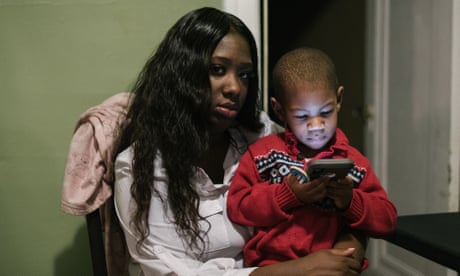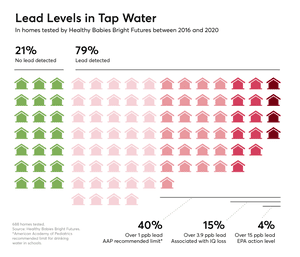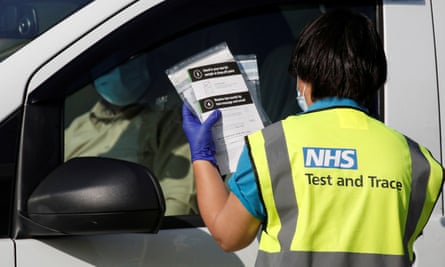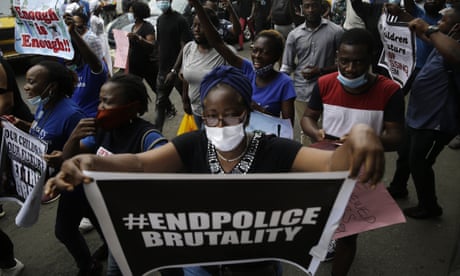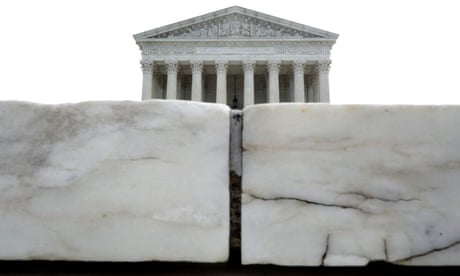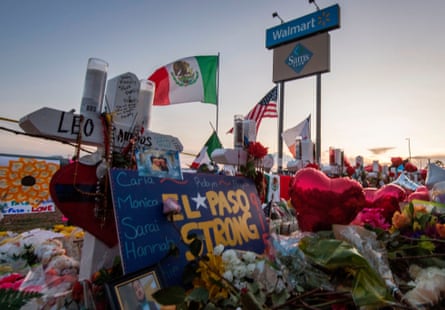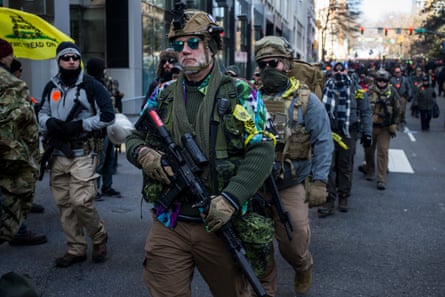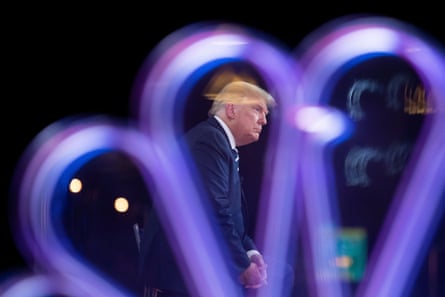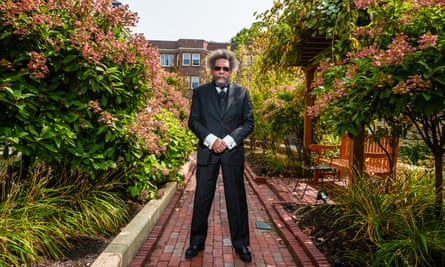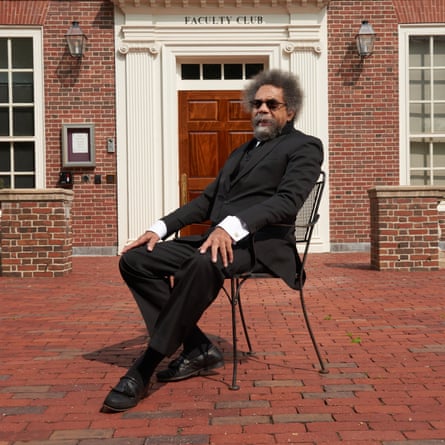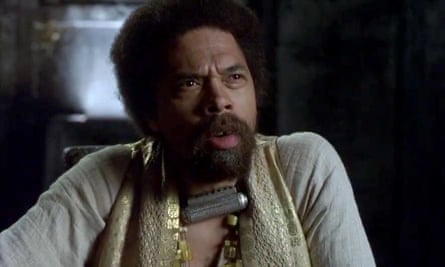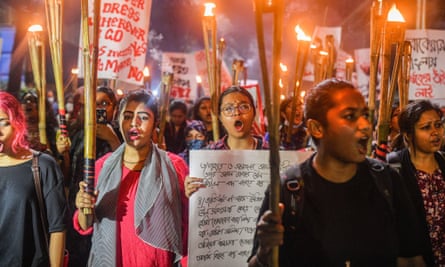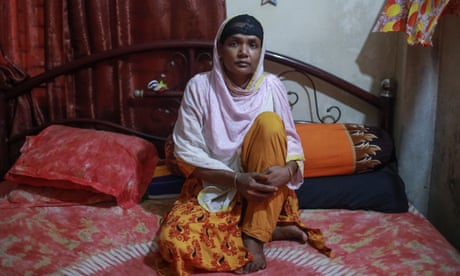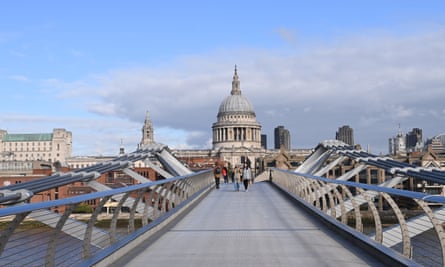Spencer Davis, bandleader with the Spencer Davis Group, dies aged 81
Guitarist who helped popularise blues and R&B in the UK died while being treated for pneumonia in hospital
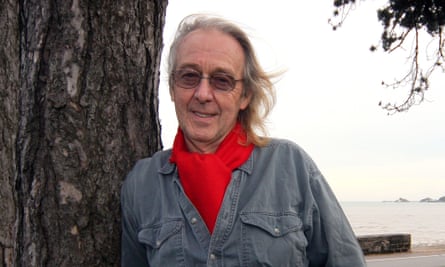
R&B pioneer … Spencer Davis in 2008. Photograph: Rex/Shutterstock
Ben Beaumont-Thomas
Tue 20 Oct 2020
Spencer Davis, who as bandleader with the Spencer Davis Group topped the UK charts twice in the mid-60s, has died aged 81 while being treated for pneumonia in hospital.
The group, who formed in Birmingham in 1963 and also featured Steve Winwood, had hits including Gimme Some Lovin’, Keep On Running, Somebody Help Me and I’m a Man. Along with a number of other early British pop groups, they helped popularise the sound of US blues and R&B in the UK.
Winwood left the band in 1967 to form Traffic, with Davis and others disbanding the group in 1969. They partially re-formed for two years in the mid-70s, and again in 2006, when Davis returned to international touring with the group.
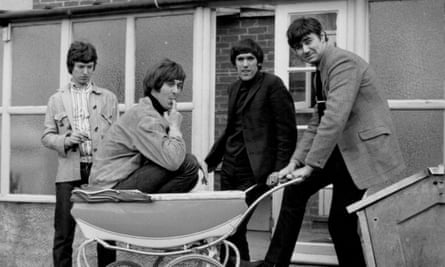
Ben Beaumont-Thomas
Tue 20 Oct 2020
Spencer Davis, who as bandleader with the Spencer Davis Group topped the UK charts twice in the mid-60s, has died aged 81 while being treated for pneumonia in hospital.
The group, who formed in Birmingham in 1963 and also featured Steve Winwood, had hits including Gimme Some Lovin’, Keep On Running, Somebody Help Me and I’m a Man. Along with a number of other early British pop groups, they helped popularise the sound of US blues and R&B in the UK.
Winwood left the band in 1967 to form Traffic, with Davis and others disbanding the group in 1969. They partially re-formed for two years in the mid-70s, and again in 2006, when Davis returned to international touring with the group.

The Spencer David Group in 1966, with Davis in pram. Photograph: John Pratt/Getty Images
Born in Swansea in 1939, Davis began learning accordion and harmonica at the age of six. Drawn to the allure of US R&B records, he took up the guitar and formed his first band the Saints with Bill Wyman, who later joined the Rolling Stones.
Davis moved to Birmingham to study German at university, and played in bands on the side, first performing American folk and traditional blues. In 1963, he and drummer Pete York recruited the 15-year-old Winwood and his brother Muff to their band, first called Rhythm and Blues Quartet, then the Spencer Davis Group.
Like the Stones, the Dave Clark Five, the Kinks and others, the Spencer Davis Group were part of the flourishing “beat” scene in the mid-60s, playing music influenced by American rhythm and blues. They, along with another Birmingham band the Moody Blues, were dubbed “Brum beat” to differentiate them from the vibrant scenes in London and Liverpool, though their popularity grew with a residency at London’s Marquee club.
Building their sound around uptempo rhythms and Winwood’s powerfully soulful vocals, their first single, I Can’t Stand It, was released in 1964. They topped the charts the following year with Keep On Running, and in 1966 with Somebody Help Me, both written by Jamaican artist Jackie Edwards. Further hits included the anthemic, Winwood-penned Gimme Some Lovin’, which was also a hit in the US, reaching No 7.
I’m a Man (1967) would be the group’s last major hit, also reaching the Top 10 in both the US and UK and later covered by the band Chicago.
Following their first breakup, Davis moved to the US and struggled financially, later complaining of punitive record contracts. “I didn’t realise what had been going on. I’d sold millions of records and hadn’t seen a penny from them,” he said in 2005.
He switched to an industry role in the 70s, working with his label Island Records to help develop artists including Bob Marley and Robert Palmer. He also helped Winwood’s solo career.
Artists paying tribute to Davis include Gary Kemp of Spandau Ballet who tweeted: “He lead a magnificent band, one of the greats of the 60s, along with Muff and Steve Winwood. Keep in [sic] Running and Gimme Some Lovin’ were R&B classics. He drove soul into the white rock sound of the time.”
Born in Swansea in 1939, Davis began learning accordion and harmonica at the age of six. Drawn to the allure of US R&B records, he took up the guitar and formed his first band the Saints with Bill Wyman, who later joined the Rolling Stones.
Davis moved to Birmingham to study German at university, and played in bands on the side, first performing American folk and traditional blues. In 1963, he and drummer Pete York recruited the 15-year-old Winwood and his brother Muff to their band, first called Rhythm and Blues Quartet, then the Spencer Davis Group.
Like the Stones, the Dave Clark Five, the Kinks and others, the Spencer Davis Group were part of the flourishing “beat” scene in the mid-60s, playing music influenced by American rhythm and blues. They, along with another Birmingham band the Moody Blues, were dubbed “Brum beat” to differentiate them from the vibrant scenes in London and Liverpool, though their popularity grew with a residency at London’s Marquee club.
Building their sound around uptempo rhythms and Winwood’s powerfully soulful vocals, their first single, I Can’t Stand It, was released in 1964. They topped the charts the following year with Keep On Running, and in 1966 with Somebody Help Me, both written by Jamaican artist Jackie Edwards. Further hits included the anthemic, Winwood-penned Gimme Some Lovin’, which was also a hit in the US, reaching No 7.
I’m a Man (1967) would be the group’s last major hit, also reaching the Top 10 in both the US and UK and later covered by the band Chicago.
Following their first breakup, Davis moved to the US and struggled financially, later complaining of punitive record contracts. “I didn’t realise what had been going on. I’d sold millions of records and hadn’t seen a penny from them,” he said in 2005.
He switched to an industry role in the 70s, working with his label Island Records to help develop artists including Bob Marley and Robert Palmer. He also helped Winwood’s solo career.
Artists paying tribute to Davis include Gary Kemp of Spandau Ballet who tweeted: “He lead a magnificent band, one of the greats of the 60s, along with Muff and Steve Winwood. Keep in [sic] Running and Gimme Some Lovin’ were R&B classics. He drove soul into the white rock sound of the time.”
Spencer Davis: Gimme Some Lovin' star dies during treatment for pneumonia
The Spencer Davis Group topped the UK singles chart twice, with Keep On Running and Somebody Help Me, and had three top 10 albums.
Tuesday 20 October 2020 22:14, UK

Keep On Running musician Spencer Davis dies aged 81
The guitarist and singer was known in musical circles as the Professor.

The Spencer Davis Group topped the UK singles chart twice, with Keep On Running and Somebody Help Me, and had three top 10 albums.
Tuesday 20 October 2020 22:14, UK

Image:Spencer Davis, pictured in 2009, has died aged 81
Singer and musician Spencer Davis, who founded The Spencer Davis Group, has died while being treated for pneumonia, his agent has said.
The star, who had hits with songs including Keep On Running and Gimme Some Lovin' in the 1960s, died in hospital, aged 81.
As fans paid tribute on social media, Bob Birk, his agent of more than 30 years, said in a statement sent to Sky News: "He was a very good friend.
"He was a highly ethical, very talented, good-hearted, extremely intelligent, generous man. He leaves behind his long time, domestic partner, June and three adult children.
"He will be missed."

Singer and musician Spencer Davis, who founded The Spencer Davis Group, has died while being treated for pneumonia, his agent has said.
The star, who had hits with songs including Keep On Running and Gimme Some Lovin' in the 1960s, died in hospital, aged 81.
As fans paid tribute on social media, Bob Birk, his agent of more than 30 years, said in a statement sent to Sky News: "He was a very good friend.
"He was a highly ethical, very talented, good-hearted, extremely intelligent, generous man. He leaves behind his long time, domestic partner, June and three adult children.
"He will be missed."

Image:The Spencer Davis Group pictured in 1965: (L-R) Spencer Davis, Pete York, Steve Winwood and Muff Winwood
Among those paying tribute on social media was fellow musician Badly Drawn Boy, who tweeted: "Sad news. Spencer Davis. Legend."
Radio Caroline presenter Suzy Wild also tweeted: "I'm so very, very saddened to learn of the passing of Spencer Davis. He was such a lovely man, generous and kind, warm and funny, and will be much missed. RIP dear Spencer."
And the actor Philip Martin Brown tweeted: "#RIP Spencer Davis. Such happy memories of Northern Soul dancing to This Hammer."
Born in Wales, Davis formed his group in Birmingham in 1963, alongside Steve Winwood on keyboard and guitar, his brother Muff Winwood on bass, and Pete York on drums.
The BBC reported that the group was originally called The Rhythm & Blues Quartette, but changed their name when Muff highlighted that Davis was the only one who liked doing media interviews.
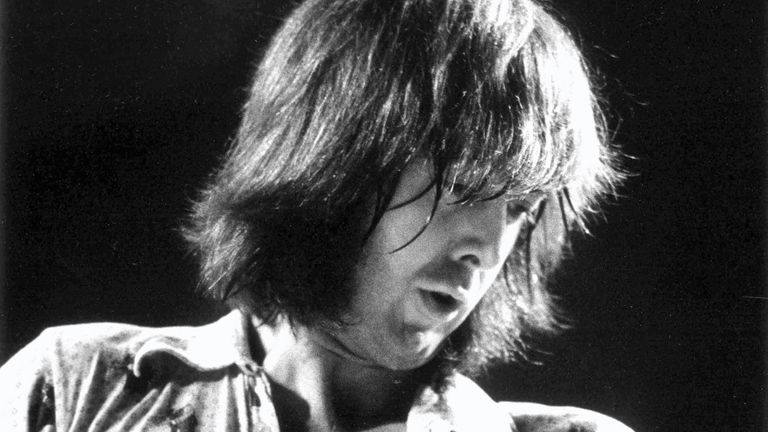
Among those paying tribute on social media was fellow musician Badly Drawn Boy, who tweeted: "Sad news. Spencer Davis. Legend."
Radio Caroline presenter Suzy Wild also tweeted: "I'm so very, very saddened to learn of the passing of Spencer Davis. He was such a lovely man, generous and kind, warm and funny, and will be much missed. RIP dear Spencer."
And the actor Philip Martin Brown tweeted: "#RIP Spencer Davis. Such happy memories of Northern Soul dancing to This Hammer."
Born in Wales, Davis formed his group in Birmingham in 1963, alongside Steve Winwood on keyboard and guitar, his brother Muff Winwood on bass, and Pete York on drums.
The BBC reported that the group was originally called The Rhythm & Blues Quartette, but changed their name when Muff highlighted that Davis was the only one who liked doing media interviews.

Spencer Davis, performing live on stage at Alexandra Palace, London on 2 August 1973
According to the Official Charts Company, the band topped the UK singles chart twice, with their breakout hit Keep On Running and Somebody Help Me, and had seven top 40 singles and three top 10 albums.
When Keep On Running - a cover of a song by West Indian performer Jackie Edwards - led UK charts in 1966, it overtook double A-sided Beatles single We Can Work It Out/Day Tripper as number one and the band sent a congratulating telegram to Davis.
Gimme Some Lovin' famously featured on the soundtracks of films The Blues Brothers and Notting Hill.
According to the Official Charts Company, the band topped the UK singles chart twice, with their breakout hit Keep On Running and Somebody Help Me, and had seven top 40 singles and three top 10 albums.
When Keep On Running - a cover of a song by West Indian performer Jackie Edwards - led UK charts in 1966, it overtook double A-sided Beatles single We Can Work It Out/Day Tripper as number one and the band sent a congratulating telegram to Davis.
Gimme Some Lovin' famously featured on the soundtracks of films The Blues Brothers and Notting Hill.
Keep On Running musician Spencer Davis dies aged 81
The guitarist and singer was known in musical circles as the Professor.
Spencer Davis (Paradise Artists/PA)
By Alex Green, PA Entertainment Reporter
October 20 2020
Spencer Davis, who founded the influential beat band The Spencer Davis Group, has died at the age of 81.
The Welsh-born musician, who produced hits including Keep On Running and I’m A Man, died in hospital while being treated for pneumonia.
His agent Bob Birk told the PA news agency: “I have represented him as his agent for over 30 years.
He was a highly ethical, very talented, good hearted, extremely intelligent, generous manBob Birk, Spencer Davis's agent
“He was a very good friend. He was a highly ethical, very talented, good hearted, extremely intelligent, generous man.
“He leaves behind his long-time domestic partner June and three adult children.
“He will be missed.”
Davis, who was known in musical circles as the Professor, was born in Swansea and began learning harmonica and accordion at the age of six.
In 1960, he moved to Birmingham to read German at the University of Birmingham, where he was further exposed to burgeoning genres such as skiffle, jazz, and blues.
He formed The Spencer Davis Group in 1963, featuring Steve Winwood on keyboards and guitar, his brother Muff Winwood on bass, and Pete York on drums.

By Alex Green, PA Entertainment Reporter
October 20 2020
Spencer Davis, who founded the influential beat band The Spencer Davis Group, has died at the age of 81.
The Welsh-born musician, who produced hits including Keep On Running and I’m A Man, died in hospital while being treated for pneumonia.
His agent Bob Birk told the PA news agency: “I have represented him as his agent for over 30 years.
He was a highly ethical, very talented, good hearted, extremely intelligent, generous manBob Birk, Spencer Davis's agent
“He was a very good friend. He was a highly ethical, very talented, good hearted, extremely intelligent, generous man.
“He leaves behind his long-time domestic partner June and three adult children.
“He will be missed.”
Davis, who was known in musical circles as the Professor, was born in Swansea and began learning harmonica and accordion at the age of six.
In 1960, he moved to Birmingham to read German at the University of Birmingham, where he was further exposed to burgeoning genres such as skiffle, jazz, and blues.
He formed The Spencer Davis Group in 1963, featuring Steve Winwood on keyboards and guitar, his brother Muff Winwood on bass, and Pete York on drums.
Bandmate Steve Winwood (Myung Jung Kim/PA)
They originally performed as the Rhythm and Blues Quartet and played mostly R&B covers.
Within a year, they had landed a regular gig at the famous Marquee Club on Oxford Street in London, and by 1964 had adopted the name The Spencer Davis Group.
They topped the UK singles chart twice and had seven top 40 singles, according to the Official Charts Company.
The original line-up were together for six years, with subsequent reunions featuring a variety of new players.
The track Gimme Some Lovin’ famously featured on the soundtracks of films The Blues Brothers and Notting Hill.
Music by The Spencer Davis Group is also included in the recent Helen Reddy biopic I Am Woman.

They originally performed as the Rhythm and Blues Quartet and played mostly R&B covers.
Within a year, they had landed a regular gig at the famous Marquee Club on Oxford Street in London, and by 1964 had adopted the name The Spencer Davis Group.
They topped the UK singles chart twice and had seven top 40 singles, according to the Official Charts Company.
The original line-up were together for six years, with subsequent reunions featuring a variety of new players.
The track Gimme Some Lovin’ famously featured on the soundtracks of films The Blues Brothers and Notting Hill.
Music by The Spencer Davis Group is also included in the recent Helen Reddy biopic I Am Woman.
(PA)
Actor Philip Martin Brown was among those paying tribute.
He said on Twitter: “#RIP Spencer Davis. Such happy memories of Northern Soul dancing to This Hammer.”
The Brian Jonestown Massacre frontman Anton Newcombe shared a video of the band performing Gimme Some Lovin’.
He wrote: “Rest In Peace Spencer Davis.”
Horace Panter, bassist with ska band The Specials, tweeted: “One of the pioneers of those great 60s bands fusing soul and R&B into rock. Remember first hearing #thespencerdavisband as an impressionable teenager. Just got their album out so turntable beckons.”
I was not aware. Of course I was a fan. The British Invasion is my main thing. RIP Spencer Davis. Thank you. https://t.co/XZWitesw8n— Stevie Van Zandt (@StevieVanZandt) October 20, 2020
Stevie Van Zandt, best known as a member of Bruce Springsteen’s E Street Band, said he was a fan of Davis, tweeting: “The British Invasion is my main thing. RIP Spencer Davis. Thank you.”
Actor Philip Martin Brown was among those paying tribute.
He said on Twitter: “#RIP Spencer Davis. Such happy memories of Northern Soul dancing to This Hammer.”
The Brian Jonestown Massacre frontman Anton Newcombe shared a video of the band performing Gimme Some Lovin’.
He wrote: “Rest In Peace Spencer Davis.”
Horace Panter, bassist with ska band The Specials, tweeted: “One of the pioneers of those great 60s bands fusing soul and R&B into rock. Remember first hearing #thespencerdavisband as an impressionable teenager. Just got their album out so turntable beckons.”
I was not aware. Of course I was a fan. The British Invasion is my main thing. RIP Spencer Davis. Thank you. https://t.co/XZWitesw8n— Stevie Van Zandt (@StevieVanZandt) October 20, 2020
Stevie Van Zandt, best known as a member of Bruce Springsteen’s E Street Band, said he was a fan of Davis, tweeting: “The British Invasion is my main thing. RIP Spencer Davis. Thank you.”

